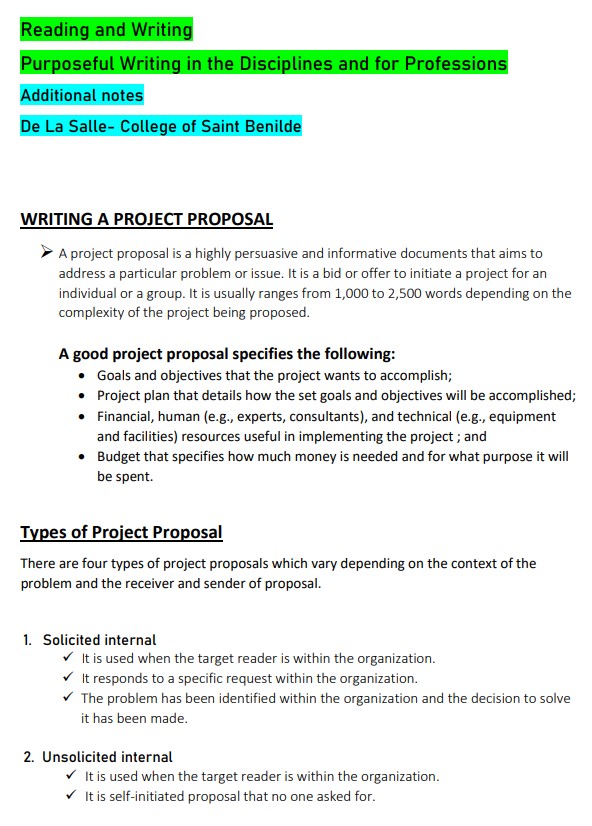Writing Project Proposals (Grade A)
Summary:
This is a summary of a guide on how to write a project proposal, which includes the definition and purpose of a project proposal, types of project proposals, and the necessary components of a project proposal. The guide provides guidelines for preparing and writing a project proposal, such as identifying the problem, selecting a framework, building a project proposal team, allotting sufficient time for planning, and choosing a reader-friendly format. Additionally, a sample project proposal called “Bottle Queen” is provided as an example.
Excerpt:
Purposeful Writing in the Disciplines and for Professions
Additional notes
De La Salle- College of Saint Benilde
- A project proposal is a highly persuasive and informative document addressing a particular problem or issue. It is a bid or offer to initiate a project for an individual or a group. It usually ranges from 1,000 to 2,500 words depending on the complexity of the project being proposed.
A good project proposal specifies the following:
- Goals and objectives that the project wants to accomplish;
- A project plan that details how the set goals and objectives will be accomplished;
- Financial, human (e.g., experts, consultants), and technical (e.g., equipment and facilities) resources useful in implementing the project; and
- The budget specifies how much money is needed and for what purpose it will
be spent.
Types of Project Proposals
There are four types of project proposals which vary depending on the context of the problem and the receiver and sender of the proposal.
1. Solicited internal
✓ It is used when the target reader is within the organization.
✓ It responds to a specific request within the organization.
✓ The problem has been identified within the organization, and the decision to solve it has been made.
2. Unsolicited internal
✓ It is used when the target reader is within the organization.
✓ It is a self-initiated proposal that no one asked for.
✓ The target reader has not yet identified that a problem exists within the organization; hence, no decision has been made to solve the problem.


Reviews